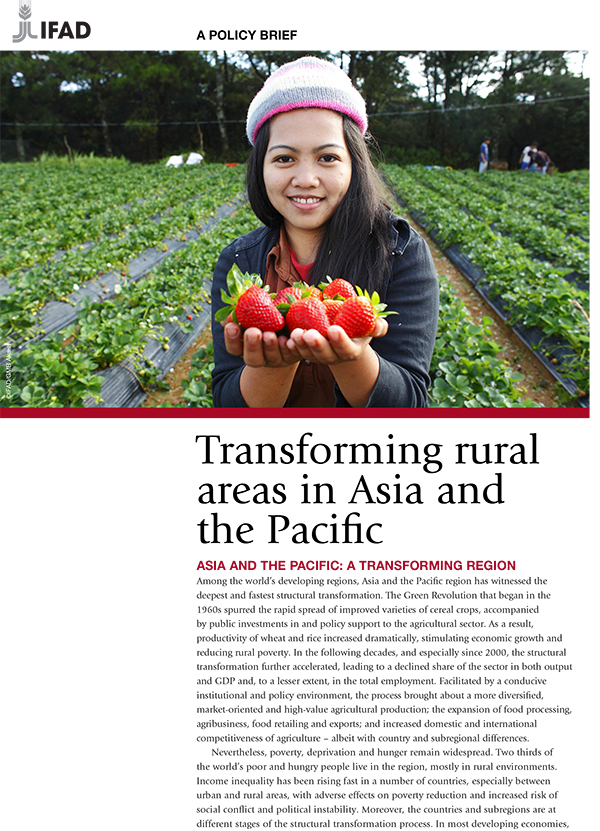Transforming rural areas in Asia and the Pacific
Transforming rural areas in Asia and the Pacific
November 2014
Among the world’s developing regions, Asia and the Pacific region has witnessed the deepest and fastest structural transformation. The Green Revolution that began in the 1960s spurred the rapid spread of improved varieties of cereal crops, accompanied by public investments in and policy support to the agricultural sector. As a result, productivity of wheat and rice increased dramatically, stimulating economic growth and reducing rural poverty. In the following decades, and especially since 2000, the structural transformation further accelerated, leading to a declined share of the sector in both output and GDP and, to a lesser extent, in the total employment. Facilitated by a conducive institutional and policy environment, the process brought about a more diversified, market-oriented and high-value agricultural production; the expansion of food processing, agribusiness, food retailing and exports; and increased domestic and international competitiveness of agriculture – albeit with country and subregional differences. Nevertheless, poverty, deprivation and hunger remain widespread. Two thirds of the world’s poor and hungry people live in the region, mostly in rural environments. Income inequality has been rising fast in a number of countries, especially between urban and rural areas, with adverse effects on poverty reduction and increased risk of social conflict and political instability. Moreover, the countries and subregions are at different stages of the structural transformation process. In most developing economies, labour productivity in agriculture is still low and the shift of the agricultural workforce to other sectors is yet to take place. Therefore, agriculture remains a critical livelihood option and the largest employer sector for most rural people.
